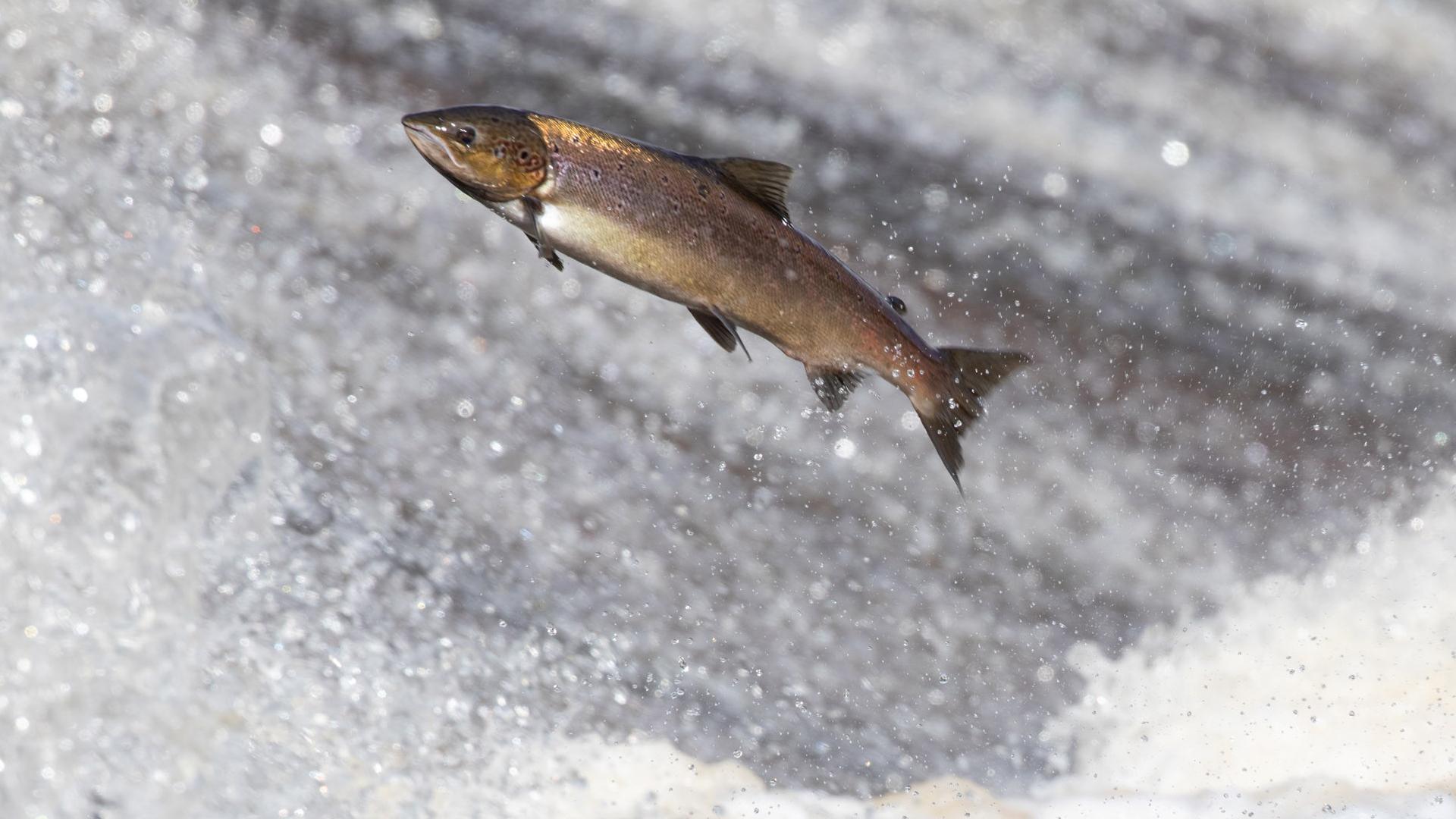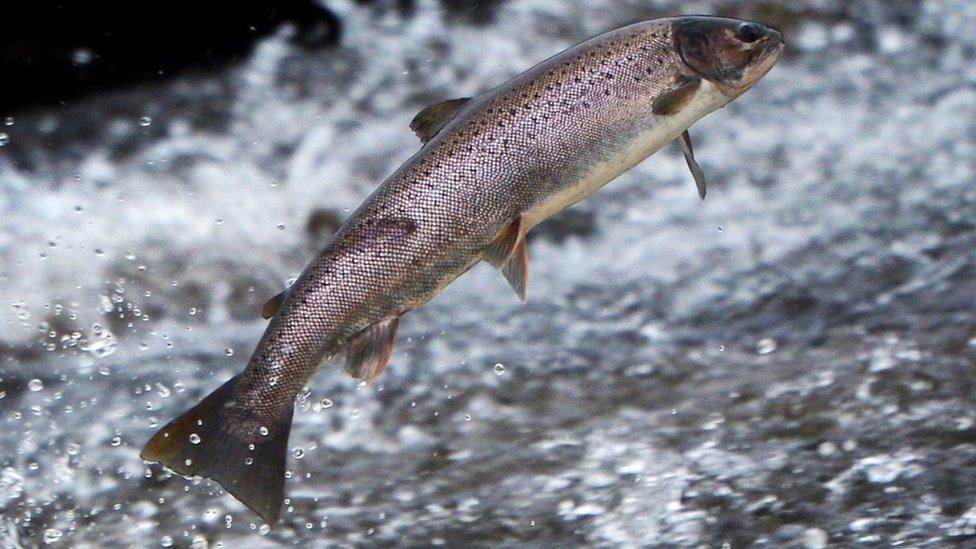Covid and low water blamed for salmon catch slump

Salmon catch numbers fell steeply on the River Tweed last year
At a glance
Rod-caught salmon levels on the River Tweed dropped sharply last year
Low water levels after May and Covid restrictions are said to have played a part
More measures are planned to try to boost fish numbers on the river
- Published
Low water levels and Covid restrictions have been blamed for a steep fall in the number of rod-caught salmon on the River Tweed.
The River Tweed Commission (RTC) annual report showed a "significant reduction" in 2021's figures compared with the previous year.
There were 5,862 rod-caught salmon recorded last year - down from more than 9,600 in 2020.
However, the figure was still slightly ahead of the low levels seen in 2018.
The RTC said rivers across Scotland had seen declining catches in recent years, reflecting decreasing survival at sea.
It is continuing to work on measures to boost numbers along the Tweed like tree planting, tagging young salmon and working with the Scottish government on a wild salmon strategy.

A record percentage of fish were returned to the River Tweed last year
The RTC report showed 93.5% of salmon caught last year were returned to the river - the highest ever figure.
It said that showed "growing recognition in the angling community of the importance of long-term sustainability".
Clerk to the RTC, Jamie Stewart, said: "Wild salmon face a number of significant issues which are obviously having an impact on fish populations in Scotland's rivers, including the Tweed.
"We are working to investigate and address other factors involved in fish survival including predation along the river network and the provision of suitable habitat for young fish.
"We were delighted to see that such a high percentage of fish caught were returned to the river and would like to thank Tweed proprietors and the angling community for this important contribution to the long-term sustainability of the Tweed's salmon population."
Related topics
- Published11 August 2020
